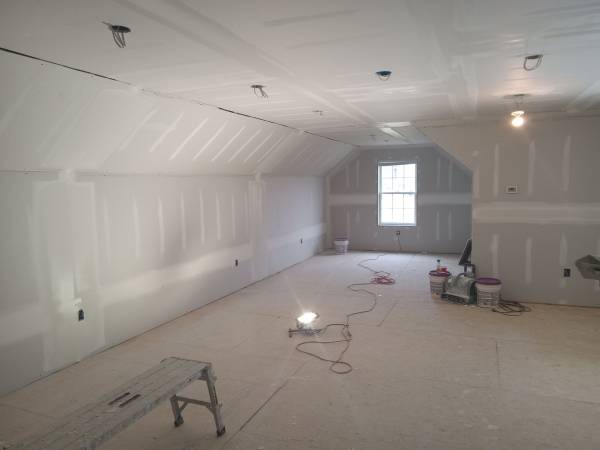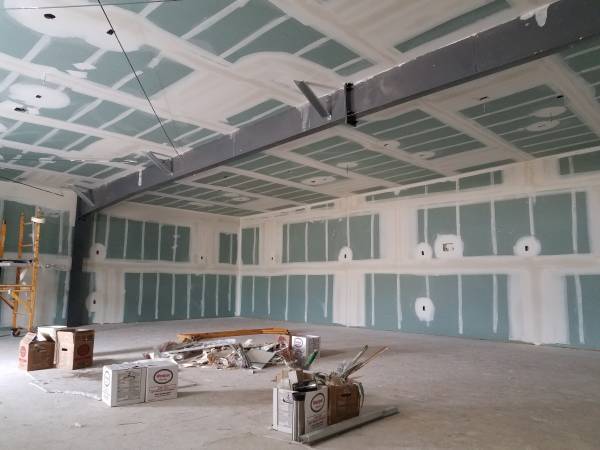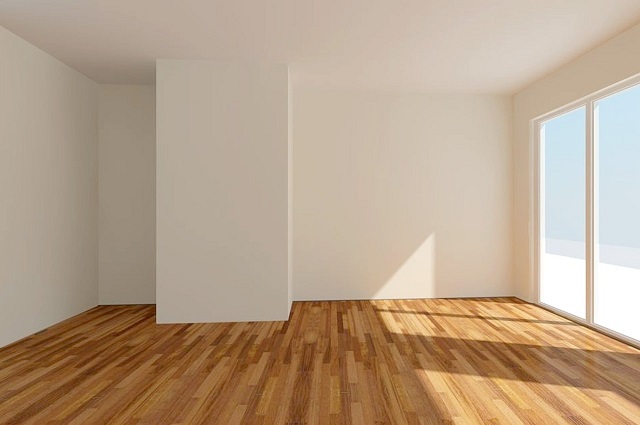Table of Contents
Understanding the Basics of Drywall Taping
Drywall taping, often referred to as wallboard taping, is an essential process in any home renovation or construction project. It requires skill and accuracy, but it is not an art that can’t be mastered by the average homeowner. The process is designed to create smooth, blending seams between pieces of drywall, effectively transforming a multisectional wall into a single, seamless structure. It is a time-consuming task, but when done correctly, the finished product can enhance the appearance of any room.
The process of drywall taping involves several steps, beginning with the application of a layer of joint compound to the seams between drywall sheets, followed by the pressing of drywall tape into this fresh layer. The purpose of the tape is to cover the joints and to serve as a reinforcement layer, while the joint compound, often known as mud, is intended to fill gaps and create a smooth, even layer. As straightforward as it may sound, the process requires a level of precision and understanding, as each step can greatly affect the final result.
Essential Tools for Professional Drywall Taping
Before you begin on the meticulous task of Drywall Taping, acquiring the right set of tools is paramount. The proper implements not only ensure an efficient workflow but also contribute to superior end-results. Understandably, the most crucial tool in the line-up is the drywall taping knife. Available in a variety of sizes, these knives are instrumental in applying and smoothing joint compound efficiently, crafting professional-grade finishes.
In addition, a quality joint compound, also often referred to as “mud,” is critical for successfully layering and blending the tape with the wallboard. For intricate areas such as the inside corners, a corner trowel becomes an invaluable tool, aiding in seamless application. Furthermore, a drywall hawk helps hold and distribute the mud impeccably. Lastly, no professional taping job is complete without a sturdy ladder and a reliable sanding pole for achieving that perfect, smooth finish.
Step-by-Step Application Process for Joint Compound
The first order of business in the application process for joint compound begins with the initial layer, often referred to as the “skim coat.” This phase involves applying the compound to the seams of your drywall with a taping knife, ideally 6 to 8 inches wide. Ensure the compound is spread evenly across the entire length of the seam for an effective base layer.
Once this initial layer, or skim coat, has been applied to the drywall, allow the joint compound sufficient time to dry before proceeding. The drying period may vary depending on the specific product instructions. Following proper drying, the process continues with the application of another layer for a visually smooth and bonded finish. It is crucial to maintain a consistent pressure during application to avoid any bumps or ridges, which could affect the final appearance. This second layer should be wider than the first to ensure a seamless blend with the drywall.
Perfecting Your Technique: Applying Tape to Joints
Once the joint compound has been smoothly applied to the seams, the process of taping begins. Precise application of tape to the wallboard joints is a crucial task that determines the final aesthetics and finish of the walls. This process can be a bit challenging for beginners but with the right course of action, you can assuredly become proficient. The objective is to cover the seams with the tape in such a manner that it creates a flat surface and makes inter-board boundaries imperceptible.
Despite the apparent simplicity, wallboard taping is an art that demands attention and practice. Start with rolling out the tape along the seam, pressing it down into the joint compound. Cut the tape to the appropriate length using a taping knife. Then, with gentle strokes, flatten the tape into the compound. Ensure the tape is straight, well-aligned with the joint, and devoid of any air bubbles. Use your knife to smooth out the tape and remove the excess compound from the edges. Remember, an evenly applied tape forms the base for a perfect paint job.
Handling Inside Corners with Precision
Inside corners can represent a unique challenge in wallboard taping. The level of precision needed is much higher, often requiring specific techniques and a steady hand for a flawless finish. The application process starts by applying a layer of joint compound to both sides of the corner. A good practice is to let one side dry before proceeding with the other, to minimize the chances of disturbing the still-damp compound.
Contracts and expansion due to temperature changes or building settling usually trigger corner cracks. Using a special inside corner knife, place your tape along the newly applied joint compound and smoothly run the knife along the crease. This method ensures that enough compound remains under the tape to create a bond while pressing out any excess. This can be a meticulous and somewhat time-consuming process, but the result is a professional-grade finish that stands out in quality and craftsmanship.
Navigating the Complexities of Outside Corners
Taping outside corners entails a few more challenges than the rest of your wallboard, particularly because of the nature of these corners that are susceptible to dings, bumps, and scrapes. A well-taped outside corner ensures not only a neat looking wall but also fortifies the wallboard, providing an armor of resilience against the daily wear and tear. It requires precision, the right tools, and a bit of professional know-how which, if mastered, can lead to a far superior and long-lasting result.
The first step in this process involves securing a sturdy corner bead to the outside edge of the corner. This bead serves as the framework that shapes the corner and provides the desired crisp, clean edges. Once the bead is attached, applying the joint compound to its surface is the next vital step. The application technique differs slightly from that of the regular wallboard, with the compound needing to be feathered out onto the adjacent walls to create a smooth, seamless transition. Remember, practice is key; the more you work on these steps, the more natural they become, leading to a refined, professional-grade result.

How to Blend Tape Seamlessly with Drywall
Blending tape seamlessly with drywall is a skill honed with practice and the right technique. The first step involves applying a thin layer of joint compound over the joint or seam where the wallboards meet. Then, centered over the seam, embed drywall tape, pressing it down gently into the compound with a drywall knife. Remember not to stretch the tape as it may result in bulges or humps.
The application of subsequent coats of joint compound is crucial for a seamless blend. Each coat should be wider than the last to help subtly integrate the tape with the rest of the wall. Keep the edges thin to avoid visible lines or bumps. Allow each coat to dry thoroughly before applying the next. Sand lightly between coats to ensure smoothness, but be careful not to overdo it; vigorous sanding can gouge the surface or peel off the tape. These techniques will gig you a wall that looks consistently smooth, with no evidence of any tape or seams.
Mastering the Art of Sanding for a Smooth Finish
Sanding is a vital step in the drywall taping procedure. The goal is to achieve a beautifully smooth finish that blends seamlessly with your surrounding wall surface. This requires an understanding of the right techniques and the correct use of tools. Hand sanding is the traditional method favored by the pros, and it involves using a sanding sponge or sandpaper wrapped around a block. This provides full control over the pressure applied and enables you to access tighter corners.
Sanding requires the right balance: too little pressure and the results might be uneven; too much and you risk damaging the wallboard. This is why using light but consistent pressure will yield the best results. Paying close attention to the transition zones, where the compound meets the wall, guarantees a flawless finish. Ensuring you have good lighting when sanding can also help you identify any imperfections that may need additional work.
Practical Tips to Avoid Common Mistakes
When starting off with drywall taping, it’s essential to remember that haste often leads to mistakes. An effective practice is to take one’s time in understanding the process, examining the wallboard carefully, and planning the tape application strategy meticulously. Remember, wallboard taping is more about precision than speed. Thus, rushing through the process could lead to substandard results, forcing redoing the job or, worse, causing irreversible damage. Be mindful of the application of the joint compound; an uneven layer may result in an irregular surface, making the task more tedious and time-consuming.
A common blunder many commit is neglecting the importance of choosing the right tools for the job. Understand that every tool serves a specific purpose, and settling for a make-do approach might turn counterproductive. For instance, many try to replace a taping knife with a putty knife, not realizing the massive difference it can make in the effectiveness of the task. Another common mistake is neglecting the maintenance of these tools. Regular cleaning, checking for damage, and proper storage significantly extend the life of these tools, ensuring their efficiency and saving valuable time and money in the long run.
• Always take your time: Rushing through the process of wallboard taping can lead to mistakes and substandard results. It’s crucial to understand the process thoroughly, examine the wallboard carefully, and plan your tape application strategy meticulously.
• Prioritize precision over speed: drywall taping is more about precision than speed. A hasty job may result in an uneven layer of joint compound, leading to an irregular surface that makes further tasks tedious and time-consuming.
• Choose the right tools: Using inappropriate tools for a specific task can be counterproductive. For instance, replacing a taping knife with a putty knife might not yield effective results due to their different functionalities.
• Don’t neglect tool maintenance: Regular cleaning and inspection for damage are essential steps in maintaining your tools’ efficiency. Proper storage also plays a vital role in extending their lifespan, saving you valuable time and money in the long run.
Another common mistake people make when starting off with wallboard taping is not preparing adequately before beginning work. Just as important as having all necessary materials at hand is ensuring that you have properly prepped both yourself and your workspace for the task ahead.
• Prepare beforehand: Make sure you have all necessary materials ready before starting work on any project.
• Prep yourself & workspace: Ensure that both you (in terms of understanding what needs doing) & your workspace (tidy & organized) are prepared before commencing work on any project.
Lastly but importantly, many overlook or underestimate safety precautions while performing such tasks which can potentially lead to accidents causing injuries or damages.
• Safety first : Always follow safety guidelines while handling sharp tools or working at heights etc., wear protective gear like gloves, goggles etc., maintain safe distance from electrical outlets/wires during operation if applicable; ensure proper ventilation especially when using chemicals/adhesives/sealants etc.; keep emergency contact numbers handy just-in-case there arises need for immediate medical attention.
Advanced Techniques: Working with Fast-Set Joint Compound
Fast-set joint compound, often colloquially referred to as hot mud, is a valuable material for skilled professionals in need of quick-setting drywall solutions. Fast-set compound simplifies the wallboard taping process and accelerates the drying time, thereby enabling the execution of multiple coats in a single day – a feat that’s nearly impossible with regular joint compounds. Its versatility is highly revered, finding utility in filling large gaps, holding up well in damp conditions and providing exemplary bonding capability.
Despite its numerous benefits, working with fast-set joint compound demands substantial practice and a good understanding of the material. Meticulous mixing is key to obtaining the right consistency – too thin and it’ll leak under the tape; too thick and it will be difficult to spread. Increasing the speed and efficiency of your application is crucial given the compound’s fast-drying nature. It is also recommended to apply it in smaller sections to manage drying time effectively, ensuring a smooth and flawless finish.
Maintaining Your Tools for Long-Term Use
Regular upkeep of your drywall taping tools is indispensable for longevity. This not only ensures their optimal efficiency but also contributes to the quality of your taping job. Be it a drywall knife, mud pan, mud mixer, or a sanding pole, each tool requires a certain level of maintenance.
Cleaning is the first step to maintaining your wallboard taping tools. Tools should be cleaned thoroughly after each use to prevent the build-up of hardened joint compound which can decrease the tool’s effectiveness. Drywall knives, for instance, should be wiped clean and dried immediately after use to prevent rusting. Furthermore, it’s important to routinely inspect your tools for damage. If any worn-out parts or damage is found, they should be replaced promptly. Your tools, when maintained properly, will not only last longer but also provide better results and increase work productivity.
Safety Measures to Follow During drywall taping
Drywall taping, although not an overly dangerous task, still needs a certain level of cautiousness. Safety measures are essential to ensure both your well-being and the quality of your work. Amidst the application of joint compound and adhesive tapes, you will be exposed to small particles or chemicals that could pose health concerns. Hence, it is suggested to always wear safety gear like dust masks, safety glasses, or even a face shield. This will help safeguard your eyes and respiratory system from potential hazards.
Moreover, it’s vital not to overlook the importance of proper ventilation when performing wallboard taping. The consistency of joint compounds and adhesives demand meticulous handling, which often involves airborne elements. Working in a well-illuminated and adequately ventilated area can significantly reduce the chance of inhalation of these airborne particles. Additionally, ensure to have a properly organized workspace. Keeping your tools efficiently arranged prevents accidental slips or falls that could lead to injuries.
Revamping Your Skills: Practice Makes Perfect
Even seasoned professionals understand that wallboard taping is a skill that benefits from continuous practice. Improving your artistry in this craft not only hinges on the initial acquisition of knowledge about tools and techniques, but also on the continued refinement of these skills. As with any hands-on trade, the properties of wallboard, tapes, and compounds vary, and the only way to become familiar with these subtle differences is through consistent practice.
Dedicating time and effort to master different techniques such as handling inside corners or working with a fast-set joint compound can augment not just your speed, but also your quality of work. The smart experiment with varying techniques and materials allows for the addition of more strategies in your repertoire for dealing with unique wallboard taping situations. It’s important to remember that proficiency comes over time, after countless drywall installations and renovations. Ultimately, just as with any craft, patience, persistence, and practice in drywall taping will lead to near-perfection.


